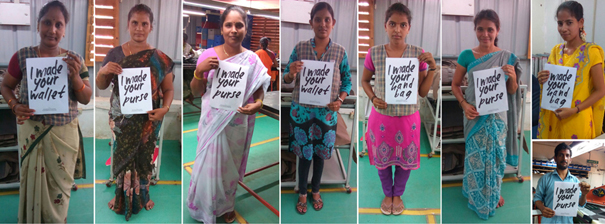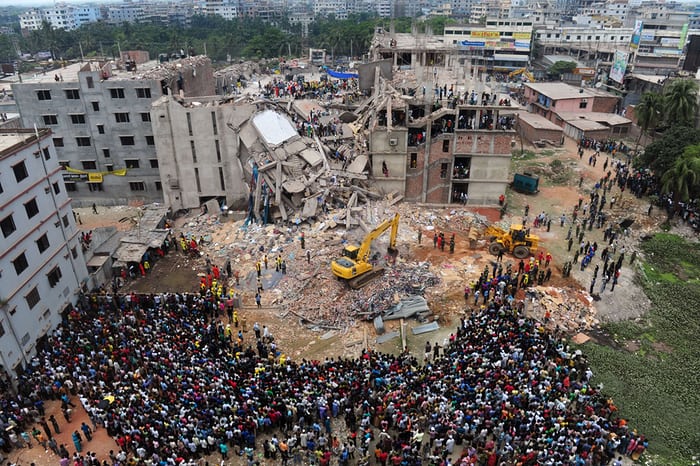It’s five years today, since the tragic Rana Plaza factory collapse in Bangladesh. And all this week it’s Fashion Revolution Week, when we remember the 1000’s who died and were injured because they worked in an unsafe building.
It’s scary how inexpensive garments can be – surely we must all wonder how is that possible? Is the maker getting a fair wage? Is the cotton grower being properly paid for his or her labour? When you think about what goes into a garment (or a handbag for that matter), how can a low price be fair trade?
Take a pair of jeans for example, something you can buy in a supermarket for £15-£20 and ask yourself how can that price be possible?
- Someone has to grow the cotton
- Someone has to pick the cotton
- Someone spins the cotton into thread
- Someone weaves the cotton
- Someone dyes the cotton
- Someone designs the jeans
- Someone cuts the fabric
- Someone sews the fabric into a pair of jeans
- Someone provides the thread
- Someone provides the buttons
- Someone finishes the garment
- Someone checks the garment
- Someone packs the garment
At every stage, someone makes a profit.
And then the garments get shipped to the UK.
- There’s a price for shipping
- There’s a price for importing
- There’s a price for delivery to the store
The shippers make a profit. The government take an import duty. The delivery to store company make a profit and then of course the store makes a profit.
£15 – WOW! And I haven’t even mentioned the buyers and merchandisers that make sure the store is stocked with the fabulous garments we want to buy.
£15! How can that be?
This is Fashion Revolution Week. It’s time to ask yourself Who Made My Clothes?
Please follow, join up and tell your friends all about Fashion Revolution, a fabulous charitable organisation aiming to change the working conditions of garment and textile workers worldwide, particularly in the developing world.
It was after discovering Fashion Revolution, that I realised how I needed to shout out a bit more about the fabulous workshop who make my designs.

Just a few of our workshop ladies (and man!) who make my designs in India.
We do it differently. Absolutely no children or forced labour, no ultra-long working hours. We have a 9am to 5.30pm working day. Time off for a lunch break. Overtime only if they want it. Just like the working conditions you and I would want. In fact we moved our workshop out of Chennai to the rural village where all these ladies live – so that they can come to work and go home every night.
Why can’t it be like that everywhere?
See more on our Facebook page.


